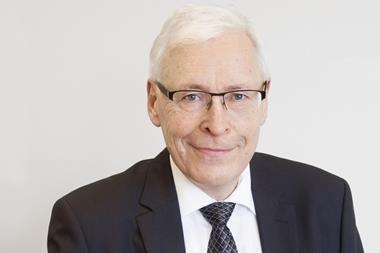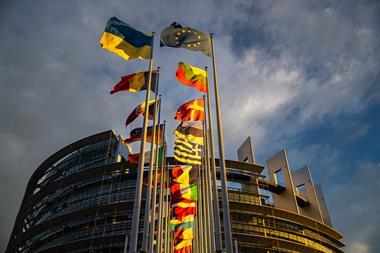For the EU, it is a policy issue. One of the basic principles of the EU is freedom of movement of capital. That means an integrated financial market. In turn, this means that pension markets must be integrated. This is one of the main objectives of the IORP directive, that must be implemented before 23 September. In the words of the directive: a genuine internal market for financial services is crucial for economic growth and job creation in the EU.
It is clear that the Commission will do what it takes to make sure that the directive works as intended. That does not mean that on 24 September the European pension market will be integrated. The directive puts it this way: “This directive… represents a first step on the way to an internal market for occupational retirement provision organised on a European scale.”
The directive creates the possibility of a pan-European pension fund, setting rules on the basis of the prudent person principle: rather then telling pension professional what to do, it demands careful, honest and transparent behaviour. Unfortunately, the principle is immediately broken with some quantitative restrictions on investment portfolios.
At the same time, member states retain much influence over their own system. The directive says: “In accordance with the principle of subsidiarity, member states should retain full responsibility for the organisation of their pension systems as well as for the decision on the role of each of the three ‘pillars’ of the retirement system in individual member states. In the context of the second pillar, they should also retain full responsibility for the role and functions of the various institutions providing occupational retirement benefits, such as industry-wide pension funds, company pension funds and life-assurance companies.” This directive is not intended to call this prerogative into question. Already from the beginning, there is tension between member states’ rights and EU interests.
What would be the consequences of an integrated pension market, once it comes about? Competition would increase at several levels. Obviously, there will be competition for clients in all member states. The most efficient investors, the best communicators stand to win. Advantages of scale are still available for funds, even the very largest. The easy way to lower cost will be to expand.
What should not be forgotten is that there will be competition of products and regulatory systems. Any product that can be offered in one member state can be offered in all member states. In the Netherlands, for example, contribution rates tend to be around 20%, while in the UK 10% is more common, with great effects on the level of the pension. Even if most UK and Dutch continue to favour the current situation, some will want to cross over.
In the UK, Scandinavia and the new member states, DC is gaining ground; in most of the others, DB remains the norm. DC offers more individual freedom of choice, while DB offers far better pensions at much less risk. Maybe the poor are least able to shoulder the risk and the rich are most willing to pay for their freedom, but that division does not stop at national borders.
Government policy and tax regulations will no longer decide the outcome if you can switch to another country with different regulations and a different tax regime. If UK regulations work against sector pension funds and Dutch regulations promote them, the outcome will depend on the cost structure of each type of fund.
If we have an integrated pension market and going to another country is a solution for survival in a struggle for growth, there might be a seismic shift in the pension market. Pensions professionals will want to band together or takeover ‘competitors’ in other countries to capture the advantages of economies of scale, and to acquire expert knowledge in other fields.
They will also seek out countries that allow them to produce at the lowest cost. In principle, that would mean that maybe three out of 25 member states would be the seat of the large majority (and the most aggressive and most successful) of European pension funds. In times of a steadily declining industrial sector and a service sector under attack, the other member states would find an exodus of capital and know-how unacceptable.
The member states will find that it is difficult to close their borders. Their efforts will quickly concentrate on harmonisation of legislation and tax regimes in order to offset the advantage of the countries that are already positioning themselves to become market leaders in pension provision: Luxembourg and Ireland. The funds that have gone will not return, however. Such a convergence can only come about if member states open their minds to other solutions and different traditions.
The instruments for convergence of supervision exist today, but so far, progress is slow. European supervisors meet in the Committee of European Insurance and Occupational Pension Supervisors (CEIOPS). This is a semi-independent organisation that advises the European Commission. CEIOPS has a sub-committee on occupational pensions. Its mandate is to:
l Develop a common understanding of the IORP directive;
l Facilitate supervisory co-operation, co-ordination and exchange of information;
l Carry out preparatory work for dealing with issues related to pension funds.
So far, most of the news coming out of the sub-committee was on the second point.
Some people cannot wait and would like to
jump-start the process. One proposal to do so is
the ‘26th regime’ approach. Each member state would keep its own system in place and a new,
pan-European system would be made available for international funds. Integration of the European pension marketpromises more choice, better
supervision and efficiencies that translate into
better or cheaper pensions. The sooner we have
integration, the sooner we will profit from its potential benefits.
There are also dangers. The largest is that, once again, politicians will decide what is good for beneficiaries. The 26th regime can easily become what we are seeing in national pension systems today – a straightjacket that determines the shape of the system and the products that can be offered. The beauty of letting things develop naturally is that politicians will continue to run after developments and developments can potentially be decided by the preferences of beneficiaries.
An excellent illustration of how regulatory initiatives can thwart market forces is a recent proposal to introduce the European Personal Pension Account (EPPA) as a pan-European regime for the second pillar. There is of course nothing to prevent any member state from introducing individual accounts. Some have already done so. In Poland, IKE proved to be disappointing as Poles decided massively to invest in other instruments. That could be unique to Poland, or IKE, but it could also be a general sentiment of EU citizens. However, the EPPA proposal will not give us a chance to find out, as it will preclude other solutions.
In conclusion, the process of convergence is set to go eventually. There is good case for standing on the sidelines and watching it develop naturally. The price we have to pay, the extra waiting, may be more than worth the result: the pension system that people actually want.














No comments yet